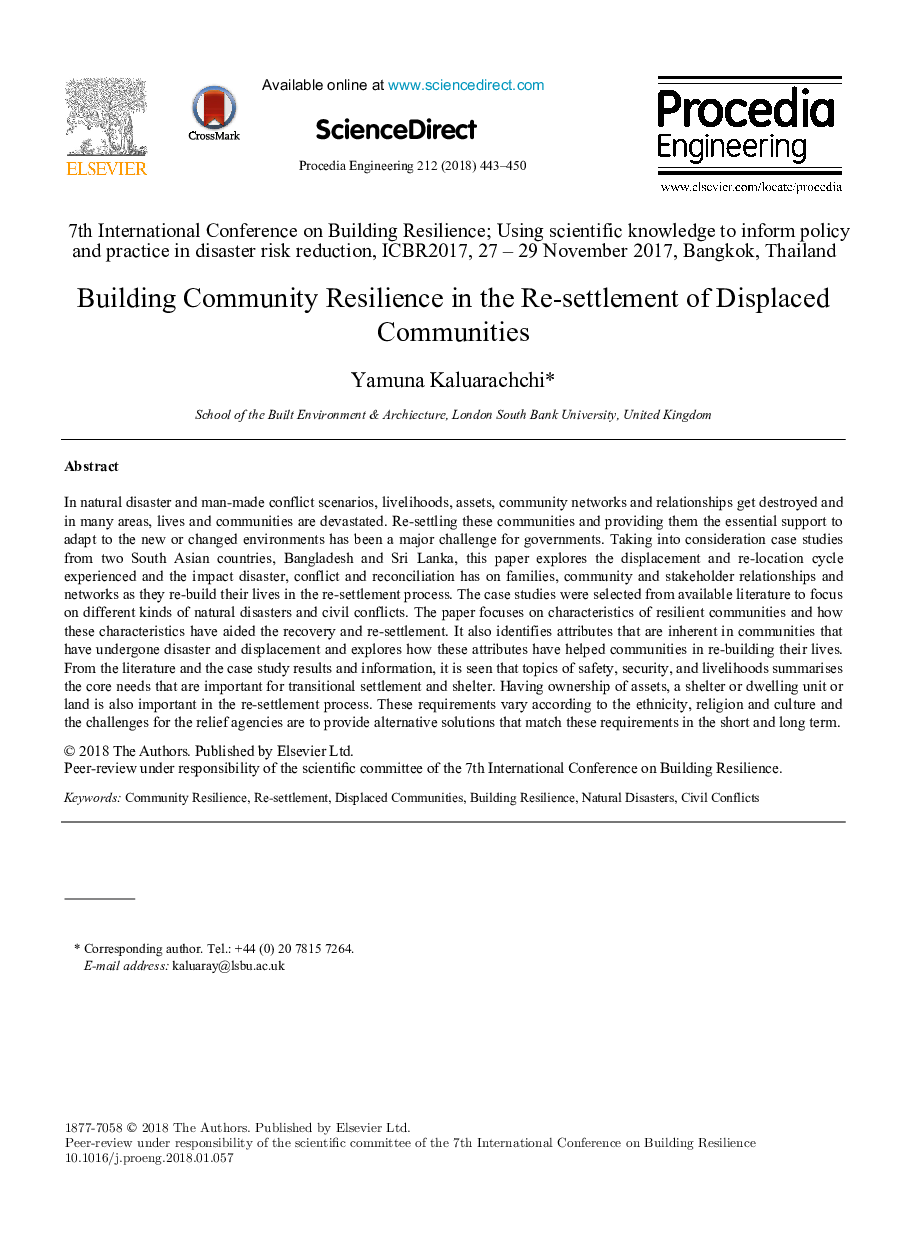| Article ID | Journal | Published Year | Pages | File Type |
|---|---|---|---|---|
| 7226016 | Procedia Engineering | 2018 | 8 Pages |
Abstract
In natural disaster and man-made conflict scenarios, livelihoods, assets, community networks and relationships get destroyed and in many areas, lives and communities are devastated. Re-settling these communities and providing them the essential support to adapt to the new or changed environments has been a major challenge for governments. Taking into consideration case studies from two South Asian countries, Bangladesh and Sri Lanka, this paper explores the displacement and re-location cycle experienced and the impact disaster, conflict and reconciliation has on families, community and stakeholder relationships and networks as they re-build their lives in the re-settlement process. The case studies were selected from available literature to focus on different kinds of natural disasters and civil conflicts. The paper focuses on characteristics of resilient communities and how these characteristics have aided the recovery and re-settlement. It also identifies attributes that are inherent in communities that have undergone disaster and displacement and explores how these attributes have helped communities in re-building their lives. From the literature and the case study results and information, it is seen that topics of safety, security, and livelihoods summarises the core needs that are important for transitional settlement and shelter. Having ownership of assets, a shelter or dwelling unit or land is also important in the re-settlement process. These requirements vary according to the ethnicity, religion and culture and the challenges for the relief agencies are to provide alternative solutions that match these requirements in the short and long term.
Related Topics
Physical Sciences and Engineering
Engineering
Engineering (General)
Authors
Yamuna Kaluarachchi,
